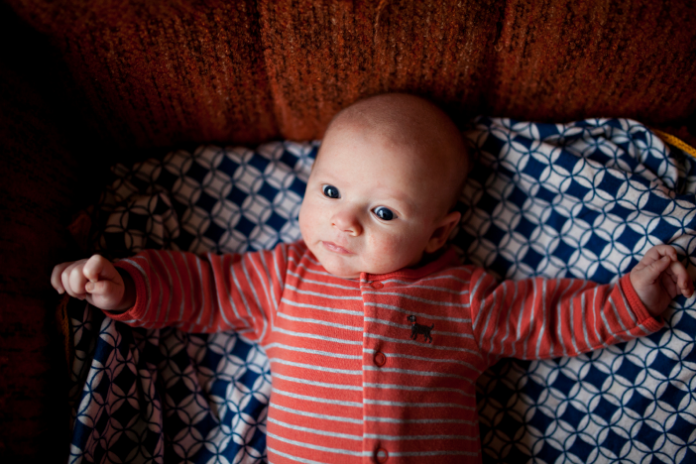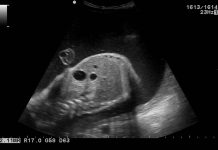Once the stump of the umbilical cord falls off, a common benign abnormality known as umbilical granuloma may occur in the neonatal period.
After birth, the leftover umbilical cord is cut, clamped, and left to dry off. Usually, mothers don’t need to do much to accentuate the healing process of the umbilical cord. Other than keeping the area around the stump clean and dry. However, a common benign abnormality known as umbilical granuloma may occur in this neonatal period. This granuloma prevents normal skin tissue from developing. It turns red and moist to eventually ooze out a thick-colored discharge. This condition can be completely harmless and painless for the baby. But it needs medical attention through the proper treatment. This helps avoid infections that might affect general health.
What is Umbilical Granuloma?
An umbilical granuloma is a small tissue growth that forms in the belly button after the umbilical cord is cut. If it becomes infected, it can pose health risks to the baby. It needs proper care and treatment to be healed.
Causes of Umbilical Granuloma
The researchers are not very sure what exactly causes umbilical granulomas. They are not dependent on the quality of care a baby receives or any other health condition. Normally, after the umbilical cord has been cut, the stump on the belly button dries and falls off. Umbilical granulomas mostly develop if the stump takes longer than 2 weeks to dry and fall off. It may be caused by extra moisture.
Symptoms of Umbilical Granuloma
- A moist pink lump of tissue over the belly button
- Warmth or redness in the belly button area which is sensitive to touch
- Pink, clear bloody, or yellow pus oozing out from the belly button
- Presence of a sticky, foul-smelling mucus
- Skin irritation around the naval
Complications of Umbilical Granuloma
In some rare cases, an umbilical granuloma does not heal in time and may develop complications. Check for warning signs such as the baby crying when the belly button or the skin around it is touched. Or if the baby develops a fever or rashes or blisters around the naval. Signs of infection are bleeding, swelling, increased redness, cloudy or bad-smelling drainage from the granuloma.
Treatment for Umbilical Granuloma
Silver nitrate solution
Applying a tiny amount of silver nitrate on the belly button causes the granuloma to dry and shrink. This topical solution is the most commonly used treatment and is not painful for the baby.
Liquid nitrogen
Applying liquid nitrogen will cause the tissue to freeze and fall off. It would be best if doing it under a doctor’s supervision.
Surgical thread
The granuloma may be tied off around its base with thread. The tissue is deprived of blood flow which will dry it up and fall off faster.
Surgical removal
As a last resort, the doctor can gently remove the tissue surgically using a scalpel or knife.
Home Care for Umbilical Granuloma
Wash hands
It is essential to maintain proper hygiene whenever handling the cord stump. Don’t touch it for unnecessary reasons.
Drying the stump well after bathing
The baby’s stump will dry and heal faster if exposed to air for more time. Don’t cover it with nappies or plastic pants. Fold nappies downwards, placing them at a distance from the stump.
Do not pull off the stump
The stump should not be pulled off even if it looks like it’ll fall off soon. After the stump has fallen off, keep the area clean and dry until healing is complete.
Changing diapers
Keeping the diaper area clean and moisture-free promotes healing and helps in preventing infection.
Position the diaper below the bellybutton
Fold and roll the top of the diaper down at the front. So that it sits right under the navel to leave the area exposed to air and free from friction. This way, the belly button will dry faster.
Giving the baby sponge baths
A granuloma is likely to heal more quickly when the navel area is kept dry. Hence, avoid water on the baby’s belly button during bathing. A sponge bath may keep the baby’s skin clean and cool until the cord falls off.
Only water
Use only water to keep the baby’s belly button area clean. If the area gets urine or fecal matter on it, wash it using a ph-neutral cleaner and clean water.
Keeping the area clean
Wipe the area around the baby’s belly button carefully with the washcloth. Make sure the umbilical cord stump doesn’t get over wet. Pat dry the baby and belly button.
When To Consult Your Doctor?
- If the baby’s umbilical cord does not fall off by itself within the first four weeks of birth and forms tissue growth.
- If the area around the stump appears swollen, red, or infected or the baby develops a fever.
Conclusion
Umbilical granulomas are common abnormalities in newborns. In many cases, treatment will provide a complete recovery without complications. Contact a doctor if a granuloma shows any signs of infection or if it does not heal over time.
References –
- umbilical granulomas – take with a pinch of salt? – pediatric form
- pinch of salt: a modified technique to treat umbilical granuloma – pubmed (nih.gov)













